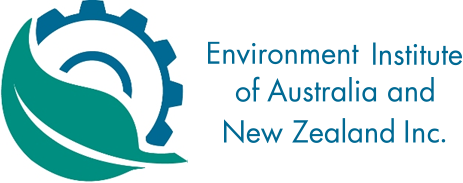-
Member Login
- Home
- About
- Institute Groups
- Membership
- Events
- News & Publications
- Institute Programs
- Resources
- Jobs Board
- Contact Us
- Site Info
Observations from the NZAIA Conference 2016
The NZAIA held their annual conference at Lincoln University from 6 - 9 December 2016. The theme focused discussion on the use of strategic environmental assessment (SEA) in New Zealand (NZ) and the wider region to support policy and plan making processes.
Internationally, SEA is used to address the big issues around sustainability in the development and implementation of policies, plans and programmes. These issues include climate change, sea-level rise, regional-scale land use changes as found with urban growth and renewal or agricultural intensification, and the impacts arising from development of infrastructure systems such as transport or water distribution. The objectives of applying SEA are typically to enhance the resilience of ecological, economic and social systems, and increase the sustainability of our environment.
The methods of SEA are similar to those applied in project-level impact assessment. In New Zealand, these typically include scoping, base-line studies, assessment of future options or scenarios and the evaluation of specific policy or planning instruments. There is particular emphasis on processes of participatory planning in NZ practice, often in the form of what are termed “collaborative” planning processes. Examples of this application include the development of district and regional land, water and coastal plans and plan changes. In NZ, policies and plans deal with strategic issues under the Resource Management Act. There is also direction and guidance under other legislation such as the Local Government Act and the Conservation Act, for example.
The two-day conference followed our usual two-day format with invited speakers addressing the overall theme in a number of current or potential applications of SEA. Jenny Pope provided a keynote address that was widely appreciated. She introduced the concept of SEA as different to EIA but also in many ways similar, indeed with a mutually dependent relationship. The distinguishing feature of SEA is its strategic purpose and broad level of analysis. She drew on the EU experience in particular and also the IAIA performance criteria in highlighting best practice, and provided an Australia case study with the James Price Point natural gas processing hub.
The subsequent sessions considered aspects of SEA in some depth focussing on practice and applications in New Zealand, Australia and Oceania (with participation from our colleagues at Secretariat of the Pacific Regional Environment Programme – SPREP, and Carolyn Cameron who talked about Australian SEA experiences). Applications included iwi perspectives, the REDD processes in the Pacific Islands, water management in areas of intensive farming, Predator-free NZ, building resilience in agriculture, tourism and recreation planning, harbour redevelopment, coastal planning, hazard management, urban planning, and health in all policies. Speakers covered the efficacy of participatory processes and the use of tools such as scenario development.
Comments during session discussions covered the use of RMA s32 analysis as already mandated for policies and plans, the effectiveness of these and other planning processes, and the challenges faced in striving for an integrated consideration of all impacts and outcomes-ecological, social, health, cultural and economic-while ensuring all voices are heard.
We asked the question, how effective is SEA in Oceania and where do we go next with our practice? The final session of the conference was open space (Indaba) where participants met in small groups to address a set of issues that arose during the conference around the topic of building capacity in SEA in New Zealand/Oceania. These groups and their main conclusions were:
- The community’s role in SEA – It is good to get the community involved early in SEA processes and important to ensure all sections have a chance to participate fully.
- Do we need an SEA champion? – The answer was clearly 'yes', with suggestions this might come through the mandate of the RMA, with an agency such as the Ministry for the Environment providing ministerial and institutional advocacy and support for use of SEA processes.
- What is SEA under the RMA? The key support is at the national level through national strategies and policy statements, cascading to the regional level. The NZAIA can help to establish a coherent and consistent approach to SEA that can be used in different jurisdictions, including beyond the jurisdiction of the RMA.
- How do you measure the effectiveness of the SEA process? It is difficult but possible to measure process effectiveness such as community engagement. It is also important to measure impacts and outcomes in the longer term through environmental monitoring, mindful of multiple factors behind any particular outcome.
Perhaps the overall impression from the conference is the wealth of SEA-related activity taking place in New Zealand, but the lack of awareness, communication and lesson sharing between the people involved with those activities. The SEA concept provides a useful framework to promote better interaction between actors and to improve the substance and consistency of strategic assessment in New Zealand. NZAIA will be looking for ways to contribute to that process.
We acknowledge and value the rights and interests of Indigenous Peoples in the protection and management of environmental values through their involvement in decisions and processes, and the application of traditional Indigenous knowledge.

